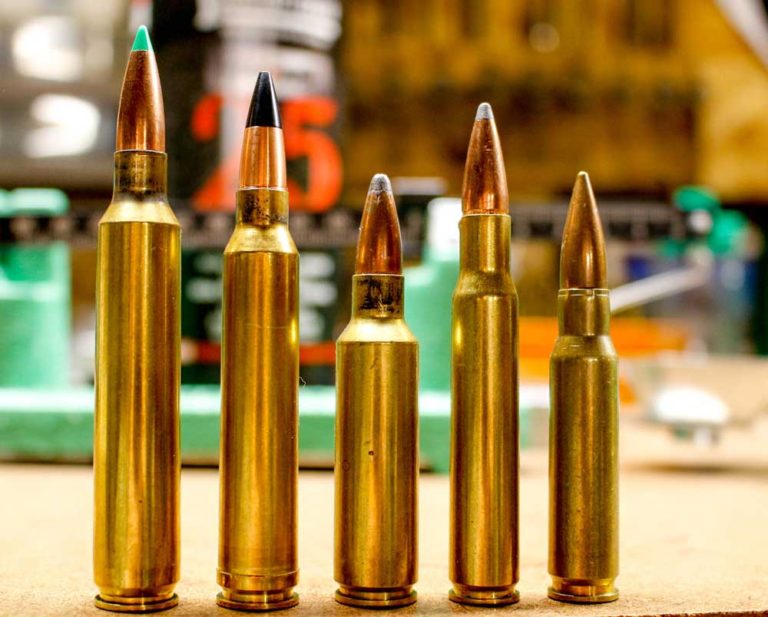
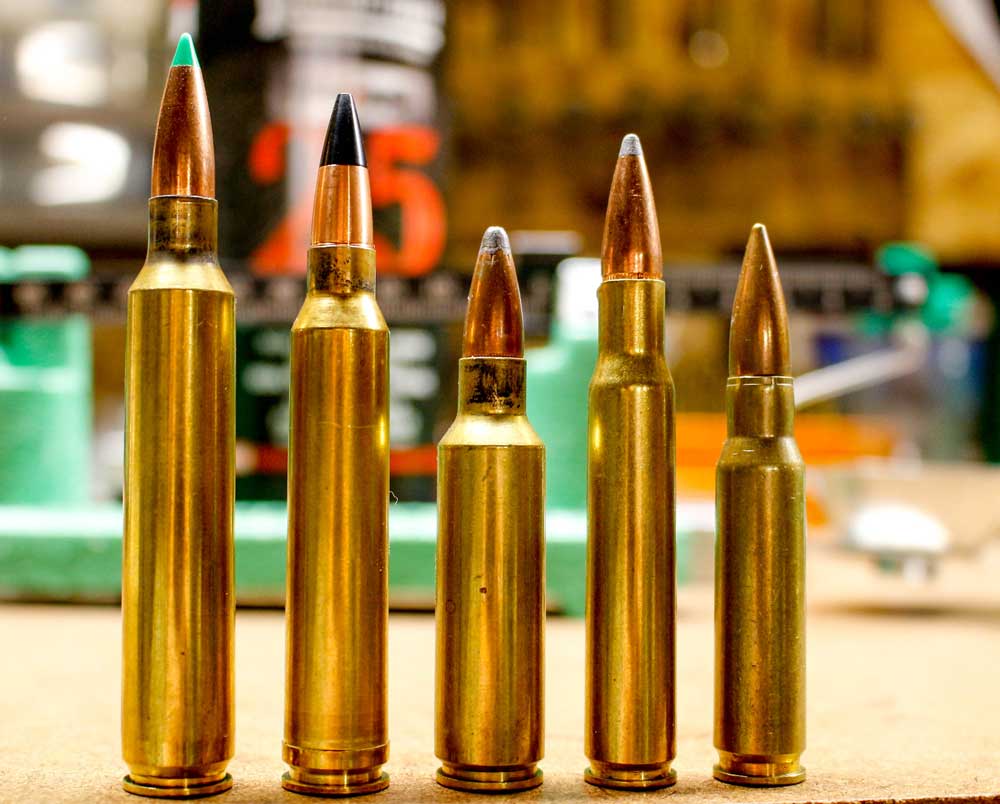
A .300 Remington Ultra Magnum story, if you will…
The phone rang on a snowy Saturday afternoon in early 2000, and upon answering I found my dad – Ol’ Grumpy Pants – on the other end of the line. The original conversation I can’t recall, but I do remember we got onto the subject of hunting caribou. You see, Grumpy Pants had just returned from a late-season caribou hunt in Quebec’s James Bay area, at the southern tip of the migration, and saw some of the longest shots he’d ever seen.
“What’s the flattest shooting .30 caliber they make?” asked GP. You see, being a veteran who was U.S. Army-trained to shoot the M14 in the Vietnam era, my father didn’t truly believe any other caliber really existed.
“Well Pop, there are no flies on your .300 Winchester, and that’s a great caribou rifle.” He liked the .300 Winnie, and still does, but he was looking for a hot rod.
“I know, just answer the question. What’s the flattest?” Here we go.
“I’d have to say the .30-378 Weatherby probably rules the roost, with the .300 Remington Ultra Magnum either tying or coming very close behind.” Both are huge cases, and both can really drive a .30 caliber bullet.
“I can’t afford a Weatherby (liar), can I get that Ultra thing in a good, cheap rifle?” You see, GP has an affinity for, well, inexpensive firearms.
“Yes, El Cheapo, Savage is chambering for it, and while affordable, it’ll shoot.” So, GP ordered a Savage Model 112 in .300 RUM – stainless barrel and synthetic stock to combat the weather of the Tioga of Quebec – and we set forth to develop some handloads for his new, flat-shooting firebreather. A couple hundred rounds of Remington brass was ordered, and though I had a hard time convincing him there were better choices for this gun than his tried-and-true 165/168-grain bullets (that wasn't easy), we soon had the Savage rifle printing ¾-inch groups with a good Sierra 180-grain flat base ProHunter, cooking along at unprecedented speeds, at least in our experiences.
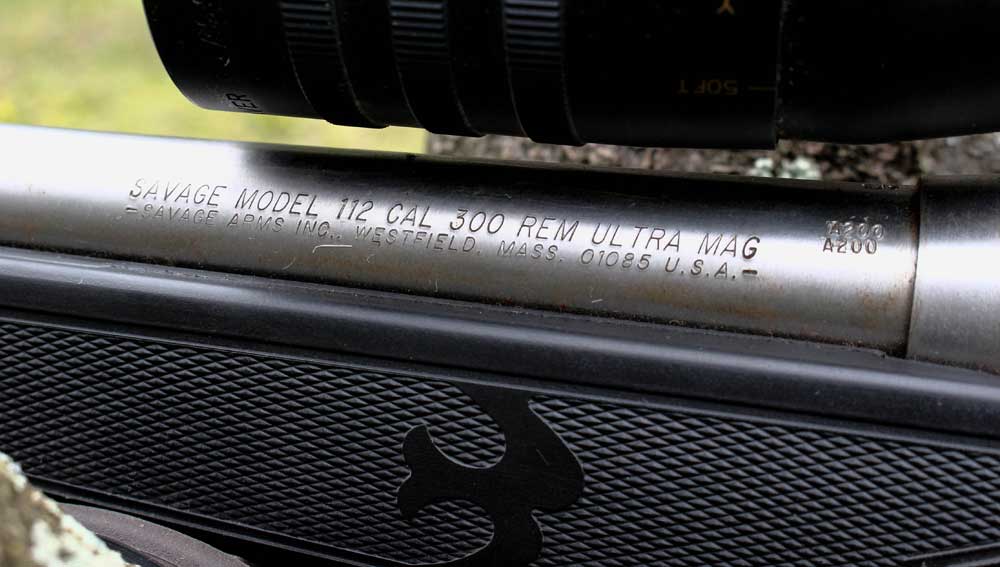
Old Meets New
The .300 Remington Ultra Magnum was released in 1999, the first of a series of cartridges that are based on the venerable .404 Jeffery, a classic African big game cartridge. They took the tapered body and gentle, sloping 8˚ shoulder of the .404 Jeff and blew it out to give maximum case capacity, so much so that the Remington Ultra Magnum series features a slightly rebated rim. The Ultra Magnum’s rim is slightly smaller than the .404 Jeffery (0.534 inches vs. 0.543 inches), and the length has been shortened from 2.875 inches to 2.850 inches, so it will fit in a standard .375 H&H-length magazine. The .300 RUM uses a nice 30˚ shoulder for headspacing; like its father the .404 Jeffery, this is a rimless design. All that body work resulted in a case which will hold over 110 grains of water, depending on the brand of case.
Even with a 30˚ shoulder, I’ve never had a feeding problem with any .300 Ultra, nor have I experienced any extraction issues due to the rebated rim, and I've used this cartridge in three or four brands of action, in both controlled round feed and push feed varieties. With a severe bottleneck – as the .300 RUM has – you can expect a quick and impressive recoil, not the classic push of the larger calibers, but a nasty slap associated with the overbore magnums. Though I’m not a proponent of using a muzzle brake, this is one of those situations where a brake is worthwhile. I’ve shot a couple of .300 RUMs without a brake: One had a well-fitting McMillan stock and one had a not-so-good-fitting stock. The McMillan stock had a recoil that was totally bearable, the other kicked so hard I was concerned about some of my fillings.
Because of the huge case capacity, most of the popular factory loads utilize a bullet on the heavier end of the spectrum – usually 180 grains and upward – but some of the monometal bullets are loaded as low as 150 grains. This has much to do with the high impact velocities associated with the .300 RUM. Should you use a bullet of low Sectional Density and have a close shot, premature expansion is a definite concern, and penetration could be an issue. My own personal findings have shown that a premium bullet serves the .300 RUM very well, and if you're serious about this cartridge, I’d highly recommend them.
Laser-Beam Trajectories and Bone-Smashing Power
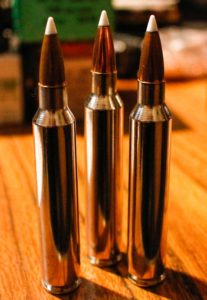
The beauty of the .300 Remington Ultra Magnum lies in its flat trajectory, though it does generate a whole bunch of kinetic energy. While many folks look at the energy figures for .30-caliber cartridges, I feel this can often be a bit misleading. For example, a .300 Remington Ultra Magnum firing a 200-grain bullet at 3,100 fps (a very popular combination) generates 4,000 ft.-lbs. of energy at the muzzle. The .375 Holland & Holland Magnum (an undeniable big-game classic) pushes a 300-grain bullet at 2,500 fps or so, for the same energy figure. However, we can all agree that the .375 H&H makes a much better choice for truly big game than does the .300 Remington Ultra, so I think that sometimes energy figures can be misleading (I, for one, much prefer John Taylor’s KO system, but that’s another article) and should be taken in context.
That trajectory though! I think the term ‘frozen rope’ may be perfectly applicable here. Pushing a 180-grain projectile, with a G1 Ballistic Coefficient of somewhere around 0.500 – pretty standard – at a velocity of 3,300 fps you can zero the rifle at 300 yards, and maintain a mid-trajectory rise of less than 4 inches –usually at around 150 to 175 yards. Yes, you’ll have to remember to hold a bit low for the closer shots, but you'll only be 6” low at the 400-yard mark, and 15” low at 475 yards. That’s pretty impressive, if you ask me, and makes hitting a distant target much easier than if you were shooting a .308 or .30-’06. The lighter and faster bullets make that trajectory even flatter, while the heavier bullets will retain their energy a bit better at those longer ranges, and still offer a definitive advantage over the other .30-caliber cartridges – save that .30-378 Weatherby.
The Down Side
All that energy and velocity comes at a cost, and the piper must be paid. The sheer friction caused by driving a bullet that fast down the barrel will cause things to heat up in an awful hurry. This is one of those cartridges that I feel is best served by shooting three-shot groups, not five. Heating things up just for a five-shot group is, to me, a waste of time. The throat can be eroded rather quickly – I've had some shooters tell me that after 300 rounds there was a degradation in accuracy, while other feel 1,000 is a better number. I can’t attest to the actual number, but I've seen a .300 RUM barrel so hot I believe I could’ve lit a Marlboro off the chamber, and that’s not a good idea. I actually prefer to assess accuracy in this style of cartridge by shooting three shots from a cold barrel – even if I have to wait 30 minutes between shots. The shot from a cold barrel is invariably what’s going to count at long ranges, and it’s important to be sure of where that’s hitting.
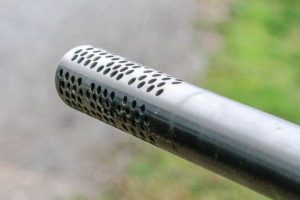
That recoil is also a factor – as I mentioned earlier – and there’s no point in owning a long-range rifle so powerful that it causes a flinch and a resulting miss. It takes discipline to master a rifle with this level of recoil, and a muzzle brake will definitely help tame things. I’ve found that a good brake will bring the .300 RUM’s recoil down to .308/.30-06 levels, and that’s much more palatable. Be absolutely sure to wear good hearing protection both at the range and in the fields; I have tinnitus from too many years of playing in rock bands in small clubs as well as exposure to rifle fire, and take my word for it – it’s not fun at all. If you're using a rifle with this kind of report, at the longer distances usually associated with a cartridge of this class, you’ll have an opportunity in the field to slip in a set of plugs, and preserve your hearing.
Is it the rifle for you? Well, if you're into the long-distance game, whether hunting or punching paper, I’d say yes. Personally, I limit my distance to 400 yards – under optimal conditions – while hunting, and I can do that with a .300 Winchester. That said, I’ve seen Grumpy Pants make some rather impressive shots with his .300 RUM, so there’s no denying that it works as a hunting round. It’s rather accurate as well, as you'll soon see.
The Factory Loads
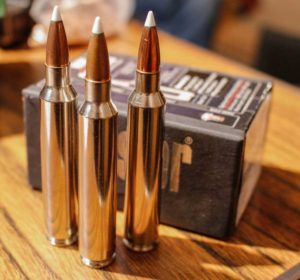
There’s plenty of stuff on the market for those that don’t handload, and the factory ammo for the .300 Remington Ultra is rather impressive. The new Hornady Precision Hunter ammo, featuring the ELD-X bullet at 200 grains, has given ½ MOA in a Hillbilly Custom Rifle. Leaving the muzzle at just over 2,900 fps – from a 26-inch tube – this sleek bullet will retain all kinds of downrange energy: over 2,200 ft.-lbs. at 500 yards. Norma loads its fantastic pair of bullets – the Oryx and the Kalahari – for the .300 RUM; the Kalahari being a 155-grain monometal at 3,360 fps, and the Oryx (a great bullet, with the rear portion being bonded to slow expansion) offered in 165 and 180 grains. The lighter Oryx leaves at 3,360 fps, while the heavier leaves at 3,250 fps. I’d opt for the 180, were I to hunt with this ammo. Remington, at one time, offered a system of ammunition for the .300 RUM that had three different power levels: the lowest mimicking .30-06 Springfield ballistics; the second at a level on par with the .300 Winchester Magnum; and the last being a full-house load. While I don’t see it on the Remington website, it made for a good means of extending the versatility of this cartridge. Big Green still makes a Managed-Recoil load for the .300 RUM, pushing a 150-grain bullet at 2,815 fps, which would be a good load for deer and the like within 200 yards.
Nosler has recently gotten into the factory ammunition game, offering their 210-grain AccuBond Long Range bullet at 2,920 fps for a great long-range hunting load. The brass cases that Nosler uses are excellent, and I’ve found its factory ammunition to be very accurate. It also offers its Partition and E-Tip bullets for those who enjoy their performance.
Federal Premium produces a trio of loads for the .300 RUM, featuring the 200-grain Nosler Partition, and a pair of 180-grainers: the Trophy Copper and the Trophy Bonded Tip. I’ve used all of these bullets, and they work perfect if you do your part. So, there’s no lack of choices for the shooter who uses factory ammo. But…
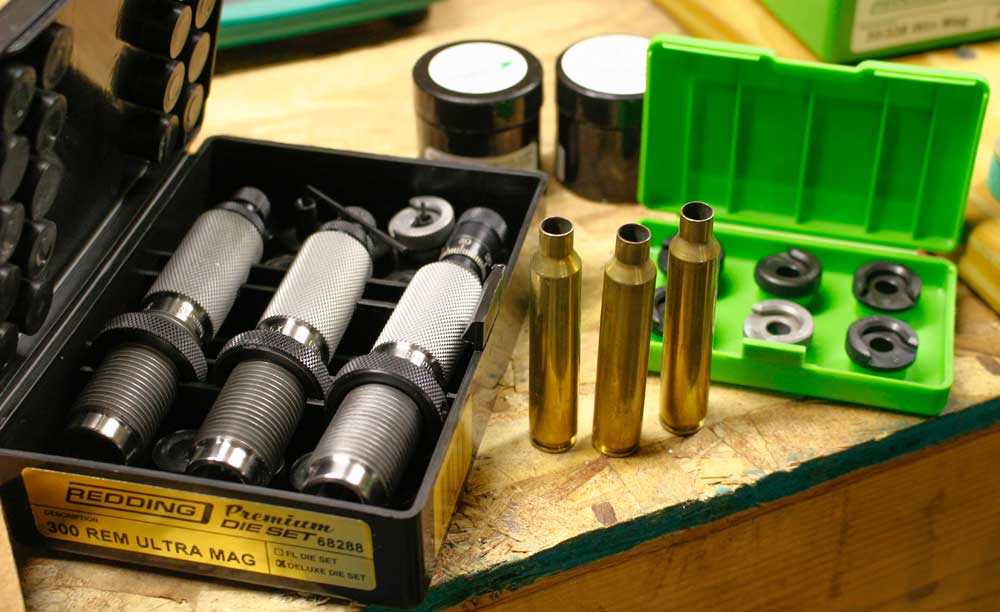
Where Things Come Alive – The Reloading Bench
Handloading for the .300 Remington Ultra Magnum will really show the true potential of the cartridge. It is one of the few instances where the handloader can actually top the factory velocities, and I’ve done it safely on more than one occasion. You’ll need a very slow burning powder – my own best results have come with Reloder 25 and 33, and IMR7828, but there are other powder choices. Hodgdon H1000, Alliant 4000-MR, and the new Enduron IMR 7977 would all be suitable for the big RUM case. The .300 Remington Ultra Magnum can easily burn 100 grains of powder, and will require the hotter spark of a large rifle magnum primer to ignite that large powder column. I like the Federal Gold Medal Match GM215M primers; they have given me nothing but consistent results. Norma makes excellent brass for the .300 Ultra, and when I load for customers, it’s usually Norma brass that gets the nod.
I rely on Redding dies for the best results in the .300 Remington Ultra; their Premium Die Set not only has the very tight tolerances I’m looking for but incorporates a couple of features I’m very fond of. The Premium set includes both a full-length sizer and a neck-sizing die, in addition to the micrometer-adjustable seating die. This gives me the option to neck-size my brass for a finicky rifle, and that special seating die gives some of the most consistent results I've ever obtained. To further control proper dimensions, Redding makes a set of Competition shellholders that will allow the handloader to control the amount of shoulder bump, in increments of 0.002 inches, so you can best match your ammunition to the dimensions of your particular chamber. These Redding dies have greatly improved the accuracy of many .300 RUMs, shrinking group size from MOA or just over to ½ MOA, and that’s an appreciable difference. I use no crimp for the .300 Remington Ultra Magnum, as there is more than sufficient neck tension to keep things in place.
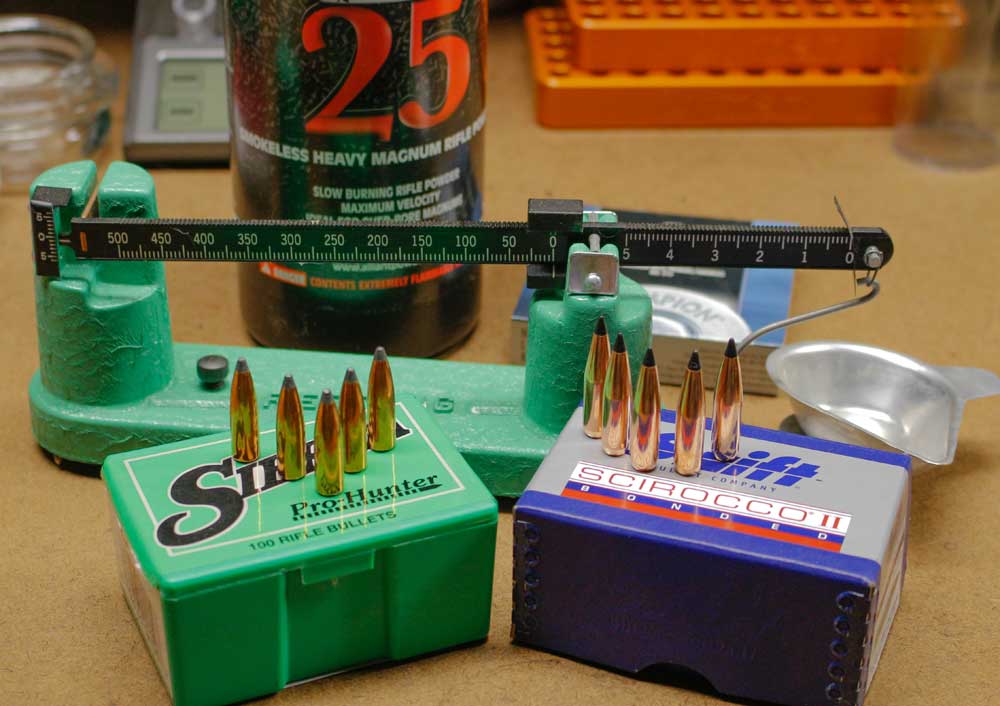
My own personal favorite load for the .300 Ultra is built around a healthy charge of Reloder 25, and a couple of 180-grain slugs. Grumpy Pants’ load uses the 180-grain Sierra ProHunter, and while I feel that bullet may give him some trouble on a close shot, he’s taken several big-bodied moose and caribou, as well as African plains game, at longer ranges with no issues. Over 95.5 grains of RL25, delivered from a 26-inch Savage barrel (before the brake) and sparked by a Federal GM215M primer, my Oehler 35P indicates a muzzle velocity of 3,360 fps. The same load underneath a 180-grain Swift Scirocco II leaves the muzzle at 3,335 fps, with the same ¾ MOA accuracy, and that combination has accounted for trophy elk, as well as many other species.
My pal Marty Groppi prefers to load his .300 RUM with a pair of Nosler bullets: the 180-grain Partition and the 180-grain AccuBond. The Partition prefers a load of 86.0 grains Hodgdon’s H4831SC, and that flies from the muzzle at 3,200 fps. The AccuBond likes things a little rougher, and when seated over a charge of an even 100.0 grains of Hodgdon’s RETUMBO, gives a muzzle velocity of 3,310 fps from the Winchester Model 70, in nice little cloverleaf groups.
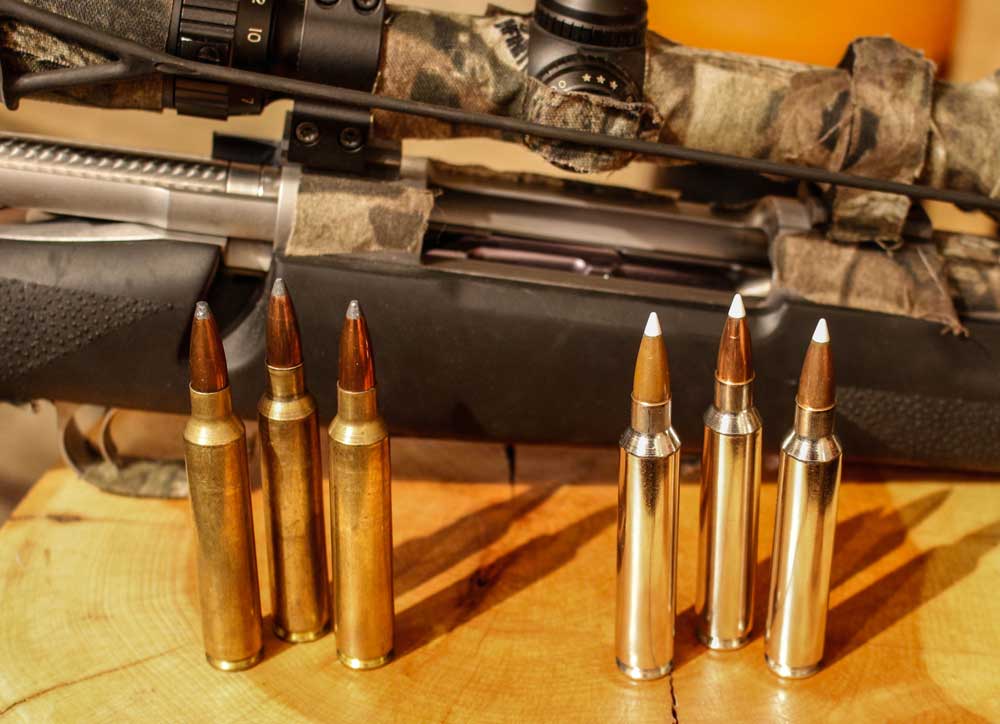
In Conclusion
Take a long, hard and honest look at your own hunting needs when considering the .300 Remington Ultra Magnum. Do you anticipate hunting or shooting at the ranges where the benefits of the .300 RUM become effective – say out past 400-450 yards? Or do you feel the additional velocity of this cartridge gives you the energy figures you'll need to extend the hunting capability of the premium .30-caliber bullets? Only you can answer that question. Hands down, it is undeniable that the .300 Remington Ultra Magnum is an effective long-range tool, fully capable of taking game out to ranges beyond the comfort level of most shooters – the essential question is this: Are you willing to do your part to become proficient enough to wield such a tool? If the answer to that question is yes, then this is a cartridge for you, and I hope it serves you well.

Next Step: Get your FREE Printable Target Pack
Enhance your shooting precision with our 62 MOA Targets, perfect for rifles and handguns. Crafted in collaboration with Storm Tactical for accuracy and versatility.
Subscribe to the Gun Digest email newsletter and get your downloadable target pack sent straight to your inbox. Stay updated with the latest firearms info in the industry.









Nice article on the venerable 300 RUM, but then, I am a little biased. Living here in the great Western US, the 300 RUM has plenty of opportunity to stretch its long legs. It has proven itself a very flat shooting and hard hitting round on several elk, and while to date my longest elk kill with it is around the 800 yard mark, several LR hunters have had much further opportunity and success.
For decades, I was not a fan of any magnum, as I could hit and kill most game animals with the trusty 270 Win, 25-06 and 30-06’s, but in 2005, I won a very nice Remington 300 RUM package from a Grand Junction, CO Wounded Warriors raffle. That rifle/scope/etc package was placed in the safe and did not come out for a couple of years.
Then one day while admiring the laminated stock and stainless features, I decided to handload a few rounds and try it on the local 1,000 meter range. Reading up a few loads gave me a quick start of 99.5 grains of Retumbo, a Nosler 180 Accubond seated .010 off the lands, Fed 215M in a prepped Remington case, and off to the range it was.
Having fired numerous heavy loaded 3 inch mag 12 gauge rounds on ducks and geese and a few 444 Marlins and 45-70 single shots, I had no issue handling recoil, but the snappy slap of 3,340 fps 180 grain in a the sporter barrel did remind me to keep the scope at a 4 inch distance. The recoil pad on the Remington 700 did a wonderful job of keeping the bruises off my shoulder, and after a couple of 3 shot groups, I was impressed to see a couple of very tight 3/8 inch groups! WOW, this round and rifle combo had potential!
Soon after, I took the 300 RUM on a Colorado elk hunt in the vast open wintering grounds just below a few snow covered mountains. Around noon that first day, I found a few elk bedded on a north facing slope below a mesa top that laser ranged a true 599 yards. After positioning my bipod, one of the bedded elk saw my movements and stood up. The wind was westerly at 12-15 mph, a usual event here, so I held a few inches into the cold breeze. By now, the elk was starring intently in my direction with muscle tone that looked ready to break and run. The shot angle was quartering toward my position, so I held for a front neck to shoulder junction and squeezed.
The recoil was only a minor distraction from my focus on the distant animal, and as soon as I had broke the sear, I saw the elk rolling down the steep slope, pause, then roll a few more yards. It was over. A 600 yard shot that hit so fast and drifted so little, I thought I was shooting at prairie dogs with my 22-250AI.
The next year, the 300 RUM would rise to the challenge again, but this time I found a heard on a distant, 800 yard+, hill, which sloped away from my position. The entire heard began to move over the top and disappear, but the large bodied trailer was too slow and paused to look my way one too many times. The 300 RUM report cracked the cold and crisp 8:45 am morning air, and almost instantly, the 180 gr Nosler Accubond struck its mark propelling a glistening cloud of hair into the morning sun. After a couple of seconds, a reassuring and heavy impact report came across the way echoing a resounding pop! The elk managed to travel the last few yards and break over the top, but upon reaching the top, it death tumbled into a small ravine.
Now, I own two 300 RUM’s, and the latest addition is a true long range built machine with a beavertail kevlar composite, aluminum inlay, pillar bedded action with a hand lapped, free floated and fluted 26 inch light target barrel with a vias muzzle brake. The trued and lapped 700 action has a trigger assembly tuned to a crisp 1.5 pounds with no over travel, and it wears a Vortex 6-24×50 PST FFP with EBR-1 recticle mounted in 6 screw heavy duty 30mm rings on a 20 MOA base. With the 180 and 200gr Accubonds and Swift 180gr Sciroccos, this package shoots in the .2’s and recoils similar to my 270’s !
While this latest rifle was built for LR hunting with the above bullets, I have just begun to experiment with the sleek Nosler 210 Accubond LR. This bullet boasts a high .73 BC, and in my 300 RUM, it can be driven to near 3,100 fps with several powders delivering 3,000 fps. While not as flat or fast as the 180’s at the 600-800 yard ranges, the 210 ACB-LR comes into its own beyond the 1,000+ yard line and delivers 1,500 ft/lbs of energy, considered minimum for elk, out to an incredible 1,600 yards!
If you desire a flat, fast and hard hitting LR rifle and are dedicated to practicing LR shooting, the the 300 RUM is something to consider. If you style and location of hunting is 400 yards and under, there are many calibers that will succeed very well.